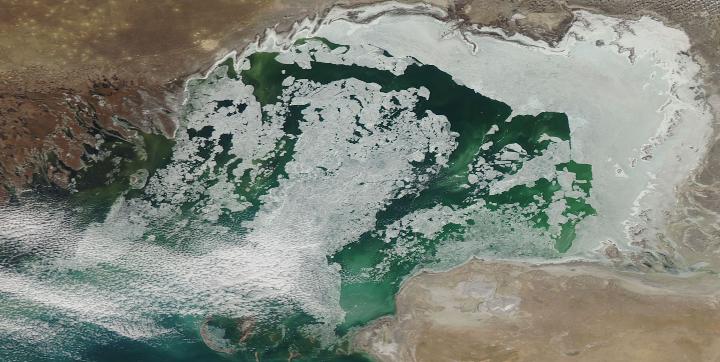During the past ice season more than 500 FDDs were accumulated in Kashagan area which makes it a moderate winter. Despite relatively late but rapid freeze-up in middle of December ice season has lasted until late March with season duration of more than 100 days. Maximum ice extent and volume of around 25 cubic kilometers was observed in the first half of February. Break-up process has started with large scale south-westerly drift in the end of February. By middle of March most of ice cover has melted leaving only grounded areas of ice along the North-eastern shore which eroded by end of March.
Ice Season from Space
Scroll through selection of remote sensing images below to see how ice cover developed through the course of winter.
Ice & Metocean Observations
The following video is a daily time lapse of ice and metocean observations for the whole season
Break-up ice clearance
Medium resolution optical image in the beginning of March illustrating break-up clearance.







